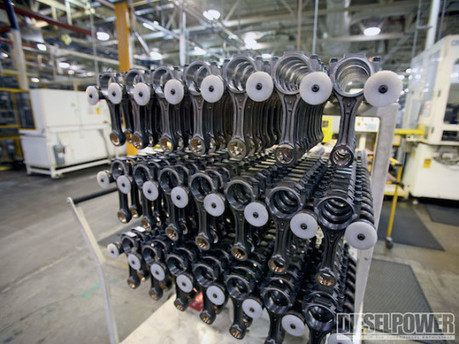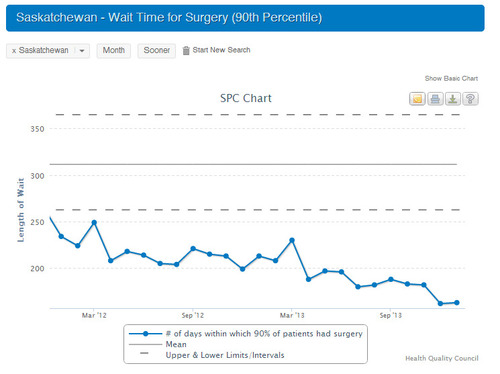Apr 8 2014
Preventing Errors in Food Delivery by Natural Mapping at Benihana
Restaurant waiters who deliver food to tables of five or more customers rarely remember who ordered what, and have to ask.

Most restaurants still use paper order forms, and the most common are not much help, because they tell the waiter what was ordered at each table, but not which customer ordered it. The row of titles on the top, with “APPT- SOUP/SAL-…” is intended as a series of column headers to record each customer’s choice in each category.
 Some form suppliers, like National Checking with their WaitRpad, have addressed this problem by providing table maps at the top of the form. These sketches include the following:
Some form suppliers, like National Checking with their WaitRpad, have addressed this problem by providing table maps at the top of the form. These sketches include the following:
- The shape of the table.
- Where the waiter is to stand when delivering food.
- A clockwise numbered position for each customer.
The waiter arrives with a tray carrying the dishes laid out clockwise to match the customer positions. National Checking posted the following video to highlight the advantages of this form:

Benihana, however, goes one step further and takes advantage of the special characteristics of their service. It is a chain of Japanese restaurants in the US, with a single 8-seat table layout and a chef at each table cooking on a hot plate in front of the customers, from ingredients in a cart. The work done away from the table is limited to kitting the ingredients to match the customers’ orders.

The order form is a map of the table, which is possible only because the tables are all identical, and the form can be filled out with abbreviations because the orders are all for full-course meals: “DIA” for “Diablo,” “SM” for “Splash-and-Meadow,” etc., with a few options, such as fried rice versus steamed rice.
While this is effective at ensuring that customers receive exactly what they ordered, it is not mistake-proofing/poka-yoke. It does not physically prevent mistakes, nor does it have a mechanism to signal any error that may happen. A disorganized chef could still get it wrong, and customers could confuse any chef by switching seats.
It is instead an application of the usability engineering principle of natural mapping. An order form that is a map of the table makes it easy for the chef to know which dishes to give to which customers and thereby reduces the likelihood of errors. Mistake-proofing would be better, if someone could find a way to do it.



Apr 12 2014
More on Toyota’s “Respect for Humanity”
Much has already been said on this topic, including an extensive discussion in this blog. So, when Frederick Stimson Harriman launched one in the TPS Principles and Practice group on LinkedIn, I was wondering whether I would learn anything. 62 comments later, I would say yes.
The contributors include Toyota alumni Bob Bennett, Dave Condinho, Luis Javier Sosa Gomez, and Christoph Roser, as well as many others who shared their personal experience outside of Toyota, including Jay Bitsack, John Davis, Kris Hallan, Rachel Inman, Emmanuel Jallas, Ram Parthasarathy, Paul Quesada, Łukasz Rogatka, Patrick Ross, William Ryan, and Stuart See.
Frederick’s question was:
In response, there is what has already been said but is worth restating, personal stories from the shop floor, and new perspectives on the topic. Below are the excerpts from the discussion that I found most enlightening, as well as my own, edited inputs. I still recommend checking out the complete thread on LinkedIn.
Following are a few themes around which I felt this material could be organized:
Christoph Roser
Bob Bennett
Luis Javier Sosa Gomez
“Respect for Humanity” versus “Respect for People”
My first reaction was that, as explained before, the TPS principle is not “respect for the person” or “respect for people” but “respect for humanity” (人間性尊重, ningenseisoncho). To me, this means paying due consideration to human nature when designing work in order to take full advantage of employees’ brains as well as muscles, while protecting the output from operator fatigue, forgetfulness, or the power of habit. This is very different from being polite.
Frederick pointed out a 2008 article by Jon Miller on the subject, where he essentially makes the same point:
Kris Hallan took a stab at clarifying this distinction as follows:
The following was advice to factory managers: “to assure good feeling and good understanding, while guarding against too much lenity on the one hand, to be careful to avoid too much severity on the other, to be firm and decisive in all his measures, but not overbearing and tyrannical — not too distant and haughty, but affable and easy of access, yet not too familiar.” This exhortation to show respect for people is from James Montgomery’s “The Carding and Spinning Masters” (Glasgow, 1832), quoted by Alfred Chandler in The Visible Hand.
The language is quaint, but the substance is not far from the kind of advice today’s would-be managers receive on working with subordinates. You have to show them respect as people, but that is not what I understand Toyota’s “respect for humanity” to be about.
Being human means being able to learn skills, sense your environment, apply logic to solve problems, and create. Showing respect for humanity means being aware of the unique capabilities of people and putting them to use. Courtesy may be a means to this end, but it is not the end.
Mission statements and other expressions of corporate philosophy need to be taken with a grain of salt. Philosophy is best written by individuals with no commercial stake in the way their ideas are received.
What is really behind the emphasis on “respect for humanity”? Clearly, the practices of US car makers post World War II did not fully leverage the potential of the work force. They have been variously described as “check your brains at the door,” command-and-control, or “management knows best.”
And what resources did tiny Toyota have to compete with these behemoths? The brainpower of its people is high on the list. Finding a way to leverage it was a key to competing with organizations that didn’t value their own.
It’s nothing philosophical; it’s only business.
Respect for Humanity and Management Practices
As a manager or as a consultant, you don’t implement or recommend policies labeled “respect for people” or “respect for humanity.” Instead, you make changes to the way work is being done and organized that are aligned with these values and needed for your business.
It goes beyond the obvious realization that the effectiveness of the Stalin/Darth Vader model is limited. It also means taking a critical look at current fads, and, in particular, putting a stop to counterproductive, demoralizing practices like 360 evaluations, Rank-and-Yank, or Management-By-Objectives, and replacing them with others that are tailored to the business at hand, including, for example, policies that are part of TPS like career planning for permanent employees, a pay-for-ability component in the wage system, and Hoshin Planning. But the list is not limited to TPS. It can include, for example, the Balanced Scorecard developed in the US.
To be more specific, following are a few differences between management practices that I think are relevant to this topic, as discussion starters:
Emmanuel JALLAS
We cannot over-stress the irrelevance of national culture to this issue. Japanese traditions, for example, are short on respect for people in many ways. Young people who married against their parents’ wishes, for example, were not viewed as courageous but selfish, because they were shirking their duties to family. Sons of small business owners were shunned in recruitment by large companies, based on the assumption that they would eventually leave to take over the family business. And women’s talents were simply ignored…
Conversely, the culture in which I have seen the greatest respect paid to people who do menial jobs is the US. I think the reason for it is that doing these jobs is considered a normal part of education. For all you know, your waiter tonight may be the teenage child of a high-level business executive. Later in life, this experience is the basis for claiming to have been “born in a log cabin he built with his own hands.”
Yet the national cultures do not translate into consistent practices on manufacturing shop floors or in offices.
Ram Parthasarathy:
What is necessary for managers to even attempt to put to use their people’s ability to sense, learn, analyze, and create is a belief that these abilities exist. It is an act of faith. It is easy to have faith in people when living a comfortable life with many opportunities; it is much harder when you have been living in misery or subjected to injustice, discrimination, or persecution.
Having faith in the abilities of factory workers was also a challenge in the American Midwest of the early 20th-century, because communications were severely limited. Many were non-English speaking recent immigrants from farming economies and with limited education, like the heroes of Upton Sinclair’s The Jungle.
The management practices that we inherited from that era are based on not taking up this challenge, relying exclusively on managers and engineers to do the thinking, and simplifying jobs. In recent decades, however, the experience of TPS implementation in California has shown that you can compete in manufacturing by leveraging the brain power of a multi-cultural, immigrant work force.
The challenge can be overcome, but it requires faith in people, which I like to call humanism.
Share this:
Like this:
By Michel Baudin • Management 8 • Tags: Corporate Social Responsibility, CSR, Ningenseisoncho, Respect for Humanity, Respect for People, Toyota